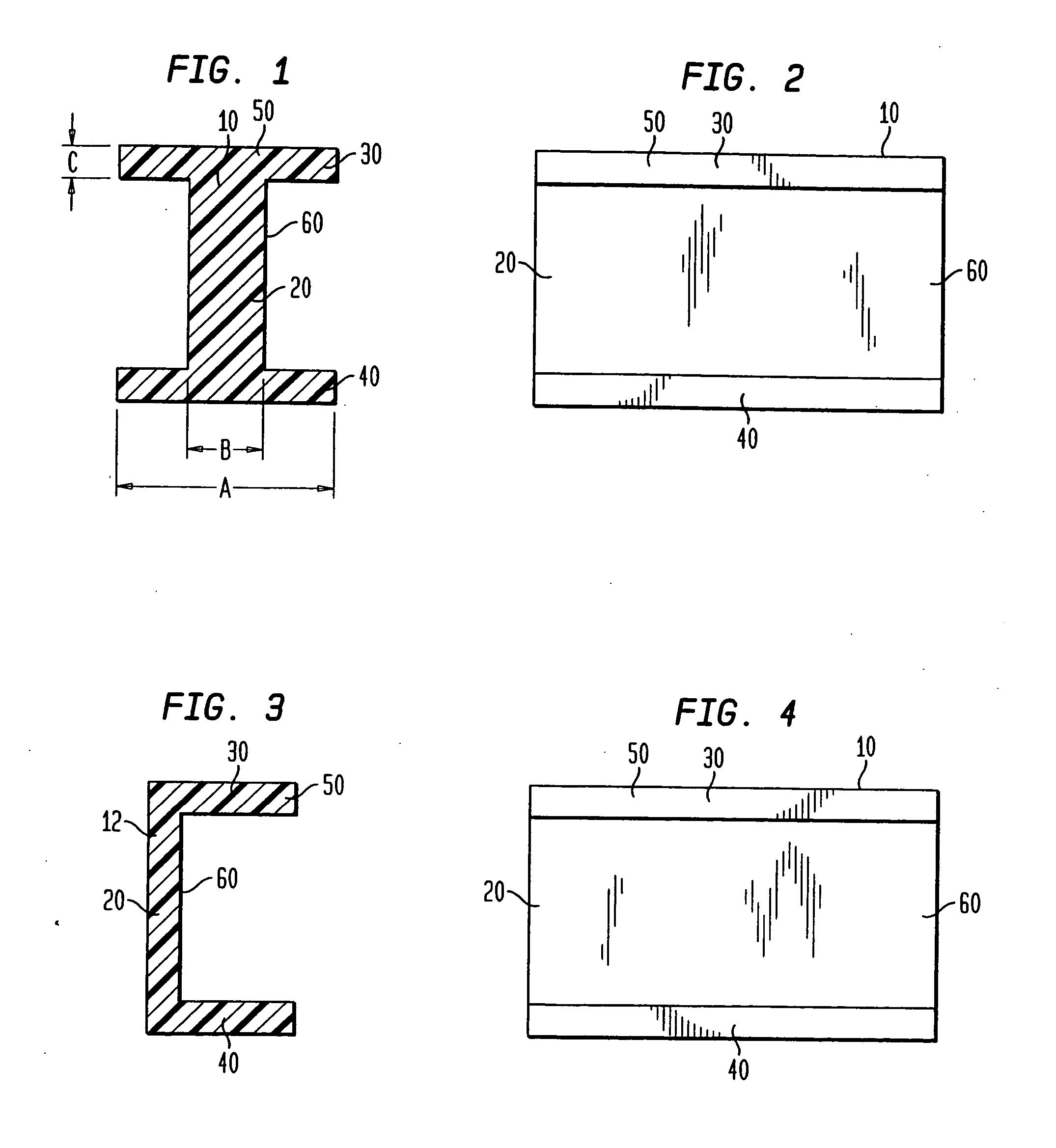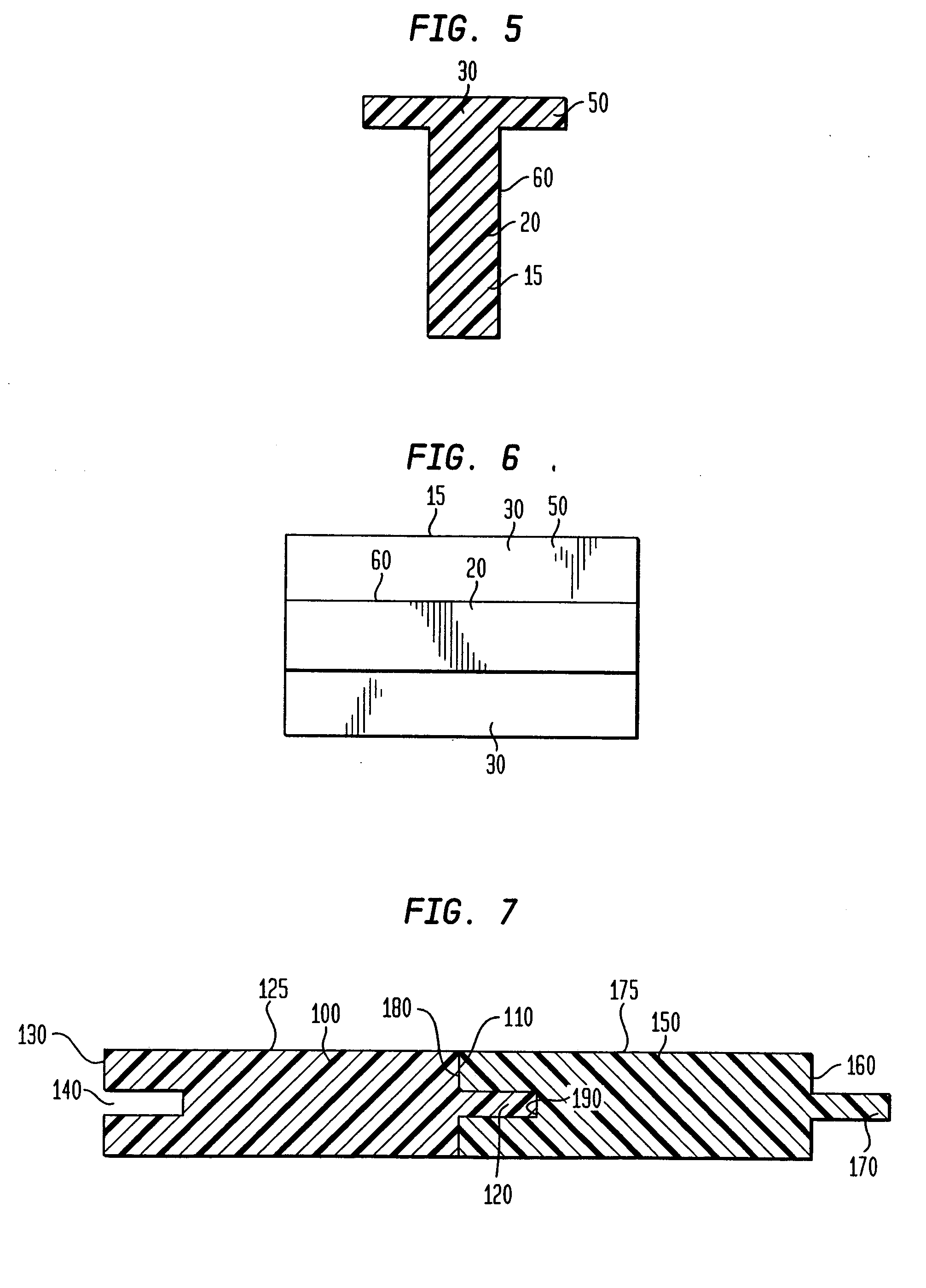Use of recycled plastics for structural building forms
- Summary
- Abstract
- Description
- Claims
- Application Information
AI Technical Summary
Benefits of technology
Problems solved by technology
Method used
Image
Examples
Embodiment Construction
[0030] The modular plastic structural composites of the present invention are prepared using the co-continuous polymer blend technology disclosed by U.S. Pat. Nos. 5,298,214 and 6,191,228 for blends of a high-density polyolefin and polystyrene and by U.S. Pat. No. 5,916,932 for blends of a high-density polyolefin and thermoplastic-coated fiber materials. The disclosures of all three patents are incorporated herein by reference.
[0031] As disclosed in U.S. Pat. No. 6,191,228 composite materials may be employed containing from about 20 to about 50 wt % of a polystyrene component containing at least about 90 wt % polystyrene and from about 50 to about 80 wt % of a high-density polyolefin component containing at least about 75 wt % high-density polyethylene (HDPE). Composite materials containing about 25 to about 40 wt % of a polystyrene component are preferred, and composite materials containing about 30 to about 40 wt % of a polystyrene component are even more preferred. Polyolefin co...
PUM
| Property | Measurement | Unit |
|---|---|---|
| Pressure | aaaaa | aaaaa |
| Pressure | aaaaa | aaaaa |
| Thickness | aaaaa | aaaaa |
Abstract
Description
Claims
Application Information
 Login to View More
Login to View More - R&D
- Intellectual Property
- Life Sciences
- Materials
- Tech Scout
- Unparalleled Data Quality
- Higher Quality Content
- 60% Fewer Hallucinations
Browse by: Latest US Patents, China's latest patents, Technical Efficacy Thesaurus, Application Domain, Technology Topic, Popular Technical Reports.
© 2025 PatSnap. All rights reserved.Legal|Privacy policy|Modern Slavery Act Transparency Statement|Sitemap|About US| Contact US: help@patsnap.com



